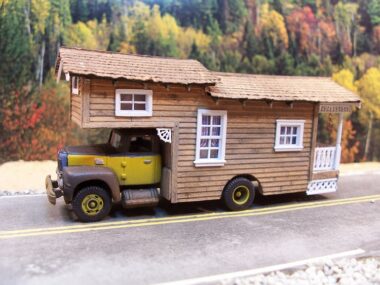Table of Contents Show
If you’re looking for more budget-friendly options for camping, dry camping sites might be worth considering. It’s a unique camping style but is relatively easy to try. If you’re tired of the same old camping experience, try dry camping. Today, we’re sharing everything you need to know about dry camping sites. Let’s get started!
What Is Dry Camping?
Dry camping is when you combine boondocking and camping in an established campsite.
Dry camping sites are usually in an established campground without water or electrical connections. You’ll be responsible for generating power and providing water.
Many campgrounds have spare fields or gravel lots for these spots. However, some places like the City of Rocks State Park in New Mexico have campsites for dry camping.
While the amenities at the site may not be much, you’ll have the advantage of restrooms, showers, potable water, and often a dump station in the campground.
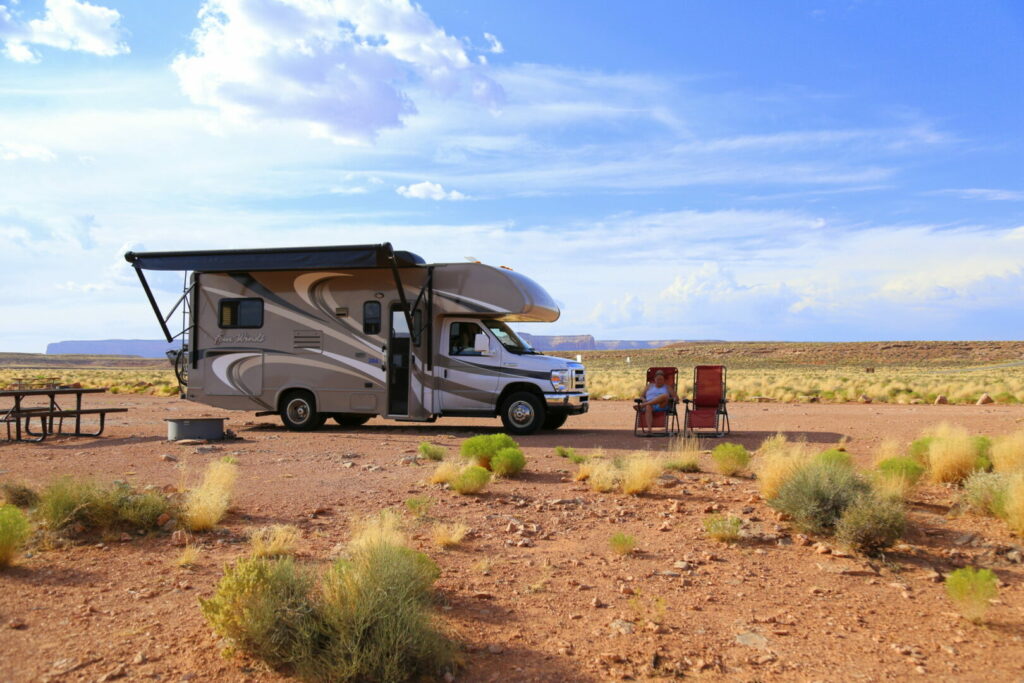
Is Boondocking the Same As Dry Camping?
It’s easy to get boondocking and dry camping mixed up. However, there are distinct differences between the two popular camping styles.
First off, boondocking is typically free or only requires purchasing an inexpensive camping permit, and you’re camping on public-use lands.
However, because dry camping is in an established campground, there’s almost always a nightly fee. We’ve seen dry camping options for $30+ in some more popular tourist destinations.
Another critical difference between the two camping styles is that dry camping includes the amenities in established campgrounds. Bathhouses, water stations, and even dump stations for RVs are typically available.
When boondocking, you’re likely never going to find a spot that has a bathhouse, and you’ll need to scout locations to get potable water and dump your tanks before arriving.
So while they’re somewhat similar, boondocking and dry camping are distinct camping styles. Understandably, some can get the two mixed up when discussing camping options.
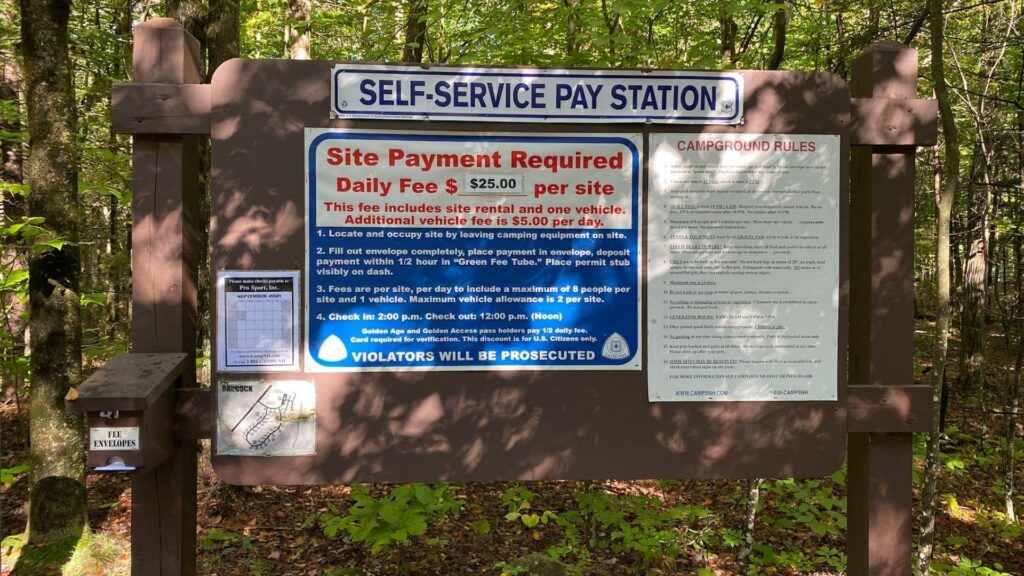
Why Dry Camping Is a Great Experience
Dry camping can be a fantastic way to camp. Because many dry camping sites have strict generator hours, you can typically expect to enjoy the silence at night.
Many dry camping sites provide generous amounts of room for campers at their sites, making it feel like you’re boondocking.
While dry camping sites typically come with a cost, they’re much more cost-effective than standard campsites. In some of the most popular tourist destinations, you can expect to pay $60 to $80 for a traditional site without full hook-ups.
Dry camping in some of these locations can be $20 to $35. These massive cost savings could make staying longer and enjoying the local attractions easier.
Tips for Dry Camping
You should know a few things before booking your first dry camping site. These are some of the best tips we’ve gathered from our experiences with dry camping. Let’s take a look!
Pick a Site With Sun If You Have Solar
You’ll need to create power to keep your batteries charged and run your appliances. If you have solar panels, you’ll want to make sure the site you book has a generous amount of exposure to the sun.
There are some dry camping spots in densely wooded areas, rendering your solar panels practically useless.
Do your research by reading reviews and call the campground to see if they can provide you with site-specific information.
You don’t want to arrive at the site and discover that you’ll have to cut your trip short because you can’t power your RV.
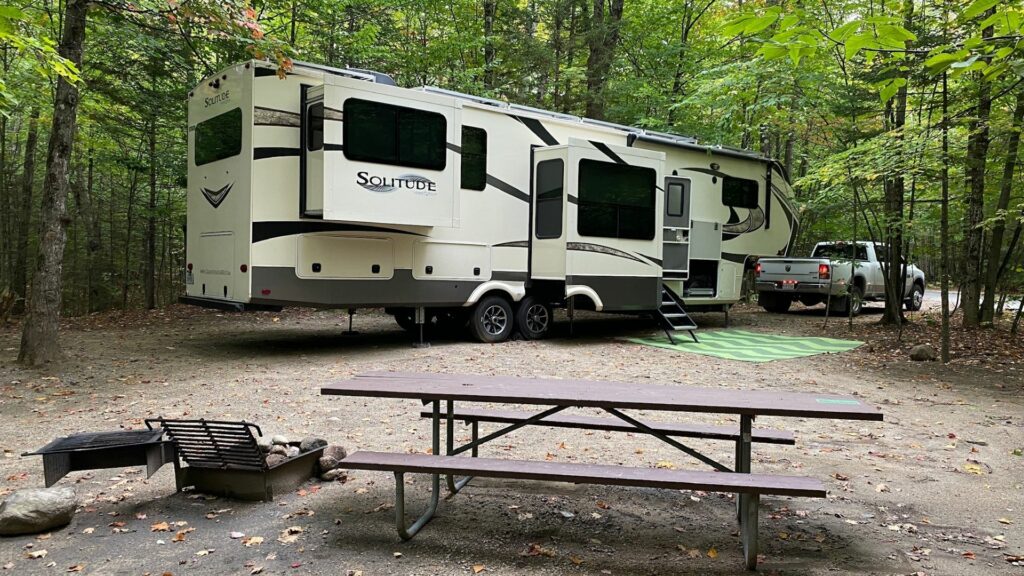
Keep in Mind: If you have solar panels, you need to read this! Here are The Best RV Solar Kits for Your Travel Style
Fill Up On Water Before
It would be best if you filled up on water before going to your site because you won’t have water at your location when dry camping.
You’ll want to double-check whether water is available at the campground. If not, you’ll want to scout a nearby area to fill up your freshwater tank before heading to the campground.
If the campground does have water, it’s a good idea to take note of the location relating to your campsite. Plan your route to avoid driving aimlessly around the campground.
If you can score a site near a water source, it can make adding water to your tank less challenging. That way, you won’t have to pack up camp and tow your rig to the water source.
Know Your Generator Run Time Hours
One of the most efficient ways to power your RV while dry camping is to use a generator. However, even the quietest of generators are relatively noisy. Most campgrounds that offer dry camping have rather strict generator hours.
This helps ensure everyone in the campground gets a good night’s sleep and doesn’t have to listen to the humming of a generator all night.If the campground has generator hours, you can expect to turn off your generator between 9 p.m. and 7 a.m.
Some campgrounds even limit generator use to a few hours in the morning and evening. Ensure you take note of the hours when you’re dry camping!
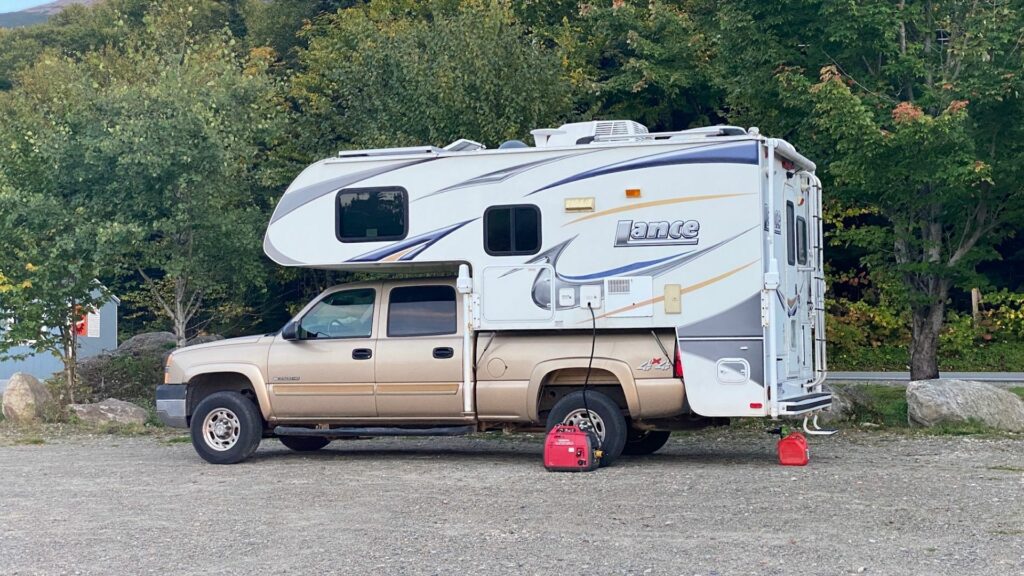
Dump Your Tanks On the Way Out
You won’t have a sewer connection at your site. This means you’ll most likely want to arrive with as much space in your waste tanks as possible and then dump them on your way out.
If you’re planning to stay for several days, the portable waste tanks that allow you to transport your waste to the dump station are a great option. By dumping your tanks on the way out, you and your RV will be ready for your next adventure!
- SIMPLIFY RV WASTE DISPOSAL: Make waste disposal hassle-free with Camco's portable waste tank. Easily transport waste...
- EFFORTLESS TRANSPORT: Haul your waste with ease with no-flat wheels built for any terrain, an oversized handle for easy...
Pro Tip: If you decide to try dry camping, you’ll need the Best RV Battery for Boondocking and Dry Camping
How Do You Find Dry Camping Sites?
One of the best ways to find dry camping sites is to use online resources and apps like Campendium and iOverlander. You can also find plenty of dry camping sites at the city, state, and national park campgrounds.
If you’re having trouble finding them online, it may be worth calling the local campgrounds and asking them. They may have dry camping options available that are not on their website.
Now You’re a Dry Camping Pro
Dry camping sites are a fantastic combination of two great camping styles. If you dream of boondocking someday, we recommend dry camping first.
It’s a great way to work your way into boondocking by having access to bathrooms, showers, and water. Now that you’re a dry camping pro, start searching for dry camping sites and try it. You might find that you prefer this camping style over any other.
Have you given dry camping a try yet?
Last update on 2024-04-18 / Affiliate links / Images from Amazon Product Advertising API







